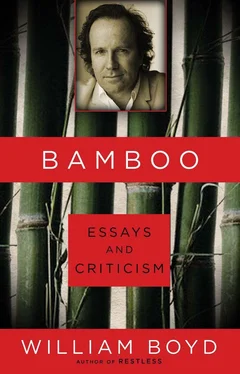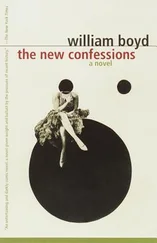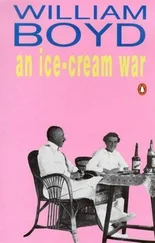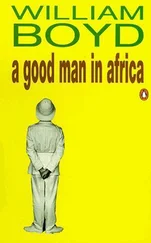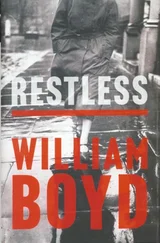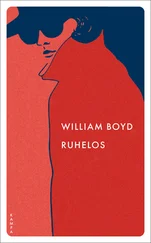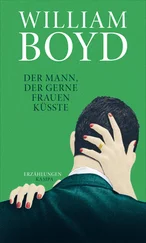Almost without exception this script analysis utilizes the concept of three-act structure to construe the merits and demerits of the screenplay in question. “… the conclusion of act one is weak and does not prefigure the emotional highs in act two …”; “… acts one and two work well but there are real problems of pacing in act three …” and so on. There are other buzz- or nonce-words that figure in Hollywood script analysis—“character arcs,” “backstory,” “beats,” “gracenotes,” “pushing the envelope,” etc. — but none — none — has such a pernicious hold as three-act structure.
Now this notion may be a handy device for writing coverage (by and large American filmscripts do not number scenes), but the use of three acts has become widespread in the teaching of screenplay writing and, inevitably, in the writing of screenplays also, and there its use is far less felicitous. No one ever determined that a screenplay should have three acts — why not five? why not two? — and there is no reason on earth why the 120-page screenplay, and therefore the ninety-minute to two-hour film, should have these segments imposed on it. The fact of the matter is that film is a narrative art form, a particularly straightforward narrative art form too, compared to the novel, and the rhythms and cadences of that narrative, its rise and fall, its crises and denouements should be determined, not by some arbitrary matrix, but by the demands of the story (how compelling is it, how entertaining, how suspenseful, etc.) and the characters it is dealing with (how real are they, how sympathetic, how dramatically effective, etc.). Any shape, any structure will do if it works narratively. There is no predetermined mould into which a story should be poured: its justification is provided solely by its success. If there is one area of a film where a strong sense of form may be relevant then that is its ending, but that is because it is the end of that particular story, and not of act three.
1996
“It’s Cannes, Baby,” James D’Arcy whispers in my ear as we wait outside the Olympia Cinema on the rue d’Antibes in Cannes on a hot, sultry afternoon. James is an actor in The Trench, a film I have written and directed, and which is about to be screened in Olympia 2. He is here with two other of the film’s actors — Daniel Craig and Paul Nicholls — and we are all, all four of us, a little apprehensive, I think, as we stand here watching the audience of studio executives, international film buyers and assorted journalists from around the world file, stony-faced, into the cinema. One of Paul Nicholls’s lines from the film comes, unbidden, unwelcome, into my head: “They don’t look too happy, do they?” I reflect that this screening is, in effect, the world premiere of The Trench. No audience has ever seen it before. I wonder vaguely, far too late, of course, if this audience is the ideal one to test it on.
I first came to the Cannes Film Festival in 1971 when I was nineteen. I was studying along the coast at the University of Nice and one evening, with a German girl, hitchhiked the few miles to Cannes and strolled up and down the Croisette for a few hours, rubbernecking, looking for stars. I’m pretty sure I saw John Lennon and Yoko Ono on the terrace of the Carlton Hotel — but this may be a fantasy that I’m reluctant to let go. I remember little else about the visit but here I am, twenty-eight years later, back again.
In Nice, we quondam Niçois were somewhat disparaging about Cannes. Nice was the real city on the Côte d’Azur, Cannes was a kind of erstatz artefact, a pseudo city, all show and bravura, not worth the bother of visiting. Even Monte Carlo had more heft, more life to it. And certainly, walking up and down the Croisette — as one does, endlessly — all these years later I reflect that film festival time does not show the place in its best light. There are posters for movies everywhere — big expensive posters — stuck on the façades of buildings, specially designed to fit on lamp-posts, even the porte-cochéres and the balustraded ramps of the driveways and terraces of the luxury hotels are artlessly remodelled to promote this film or that. The place is permanently mobbed too, great crowds of people aimlessly wandering, day and night. Nothing reminds you more forcibly that Cannes is, let’s say, 5 percent glamour, 95 percent market. It’s a convention, an American friend of ours reminded us: think of it as a town invaded by sales representatives.
There are many different Cannes, depending on your needs and your function. There is the buyers’ Cannes: men and women scurrying from cinema to cinema burdened with press kits and synopses, sometimes watching only minutes of one film before they furtively leave to watch another few minutes of the next. There is the velvet-roped, red-carpeted razzamatazz of the Official Selection screenings — movie stars, the great and the would-be-great, pausing to wave to the paparazzi before they enter the concrete blockhouse that is the Palais des Festivals. However, one slowly but surely gets the impression, overwhelmingly, that Cannes is an Anglocentric event. Nothing but English spoken, it seems to me, in the cafes and bars and streets — American, English, Australian, European-English accents abound. Where are the French, one asks? All in our hotel, as it turns out.
We are staying at the Martinez, a huge art deco construct at the far end of the Croisette from the Palais and the Majestic. On the beach opposite a substantial open-sided TV studio has been built by Canal Plus to house their amazingly popular chat show, Nulle Part Ailleurs. As it happens I have been on Nulle Part Ailleurs once, in Paris — its usual home — and I know its power and its terror. It decamps to Cannes for the two weeks of the festival. It is live and unique — a combination, if that can be imagined, of, let’s say, Parkinson, TGI Friday, Spitting Image, the South Bank Show with a little bit of alternative comedy and soft porn thrown in for good measure. Everybody who is anybody in France obeys the Nulle Part Ailleurs summons. And Everybody is staying in the Martinez, or at least is temporarily present at the Martinez waiting to go on the show — which seems to last about three hours.
Which explains, I quickly realize, why there are several hundred young people corralled around the hotel’s entrance screaming their lungs out. For the serious French punter the Cannes Film Festival actually takes place here, occupying the fifty yards it takes to get from the Martinez lobby to the Canal Plus studio. The rest of the town can be left to the rest of the film industry.
I call a French friend of mine, an eminent film director, to see when he will be arriving. Oh no, he says, I’m not coming. He tells me he took special precautions to ensure his new film would not be ready for Cannes. It’s terrible what they do, the French press, he says. Look how they have massacred Carax and Pola X. “Already?” I say, sceptical. The film was screened on day one and this is only day three. “Le film est mort,” he says in a sober voice.
And it is true that the French are hardest on the French here. No reputation is immune and the attacks can be and are unremittingly savage. Catherine Deneuve — braving the firestorm in several films this year — said that for French film-makers the Cannes Film Festival is a “douloureux et dangereux” experience. Blood on the Croisette. It’s not all parties.
Thank God — because the parties are awful, appalling, a total waste of time. And yet we all go to them. We went to two in the two nights we had available: the MTV party, a modest affair of 1,200 on the Carlton Beach, and the Austin Powers party, in a deserted casino miles away. Rumours had it that there were 7,000 invitations issued for this one. We finally fought our way in, through crowds of desperate liggers, thankful our special invitations allowed us access to the exclusive VIP area where a mere 2,000 privileged guests drank free drinks and chatted sweatily to each other. Actually, the Austin Powers party was worth it, if only for the sight of a grinning, aged, squamous Hugh Hefner, sitting on a sofa, surrounded by four impossibly pert Bunnies, living tribute to the properties and potentials of Viagra and silicone, respectively.
Читать дальше
